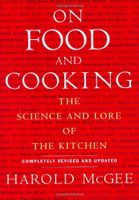Advertisement
Preventing Crystal Formation: Making Sugar into a Glass
By Harold McGee
Published 2004
Candy makers produce an entirely different structure and texture when they cool a syrup so rapidly that the sugar molecules stop moving before they have a chance to form any crystals at all. This is how transparent hard candies are made. If the water content of the cooked syrup is just 1 or 2%, then it’s essentially molten sugar with a trace of water dispersed in it. The syrup is very viscous, and if it cools quickly, the sucrose molecules never have a chance to settle into orderly crystals. Instead, they just set in place in a disorganized mass. Such an amorphous, noncrystalline material is called a glass. Ordinary window and table glass is a noncrystalline version of silicon dioxide. Like this mineral glass, sugar glass is brittle and transparent (and often stands in for its harder and more dangerous cousin in the movies and on stage!). Glasses are transparent because individual sugar molecules are too small to deflect light when they’re randomly arranged. Crystalline solids appear opaque because even tiny crystals are solid masses of many molecules, and their surfaces are big enough to deflect light.


